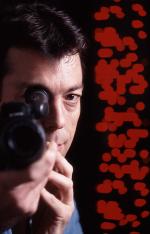The new art of surveillance
In the movies, supposedly the best way to avoid detection is to stand still. But a new surveillance system developed at the University of Adelaide turns that idea on its head. Designed for crowded public areas, the system is based around "non-motion" detection: identifying stationary items amidst the movement of hundreds of people. Such technology has many applications - for example, detecting suspicious packages placed at venues such as airports or major sporting events, blockages in tunnels, or preventing the theft of valuable paintings or artefacts at galleries or museums. One of the developers of the system, Professor Mike Brooks from the University of Adelaide's School of Computer Science, said it has the potential to considerably benefit the surveillance industry. "For other surveillance systems, movement is crucial. Human operators, and even computers, are trained to detect motion and try and look for something unusual," Professor Brooks said. "But humans can miss things - they might get tired, or lose concentration just for a split second, and that could be enough to miss a vital piece of footage." The new system, developed in cooperation with Australian start-up company iOmniscient Pty Ltd, uses artificial intelligence to check video sequences coming from multiple cameras. It can automatically identify any object that has come to rest for a pre-determined amount of time, say 5 seconds or 2 minutes. "Our system works by scanning and re-scanning the 'background' of a scene, say, for example, at an airport," Professor Brooks said. "Even though there may be hundreds or thousands of people continually moving in front of the background, it gathers snapshots of what's behind them and is able to formulate a view of the entire scene. "Then, if something is introduced into that scene and left there, it is quickly able to recognise the change and alert the operators of the system that this has occurred." It has taken more than 10 years for Professor Brooks and his team, at the Cooperative Research Centre for Sensor Signal and Information Processing, to develop the system to commercialisation, as they have made constant refinements to how it operates and tackled problems that at first glance seemed insignificant. "Our system is able to avoid false detections that can be generated by many unexpected factors. For example, in an indoor area, the shadow cast by a pot plant can alter simply because illumination through a window changes as a result of a cloud passing across the sun," said key system implementer Dr Danny Gibbins. "It's also clever enough to deal with issues like trees swaying in the wind, and perspective - how an object appears bigger or smaller depending on how far away it is from the camera." The iOmniscient system recently won a major international prize for Best Product in Intelligent Surveillance, and worldwide sales are beginning to flow. Story by Ben Osborne For more information about Computer Science courses, visit the University of Adelaide's Open Day - Sunday, August 15.
|





